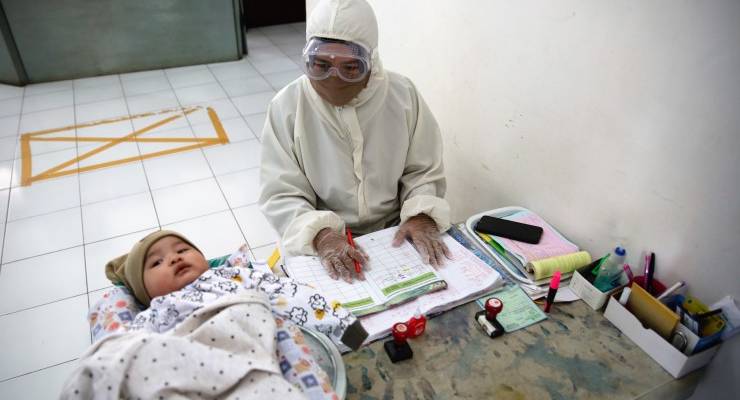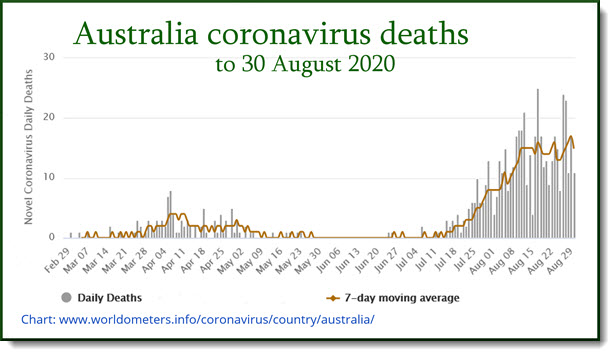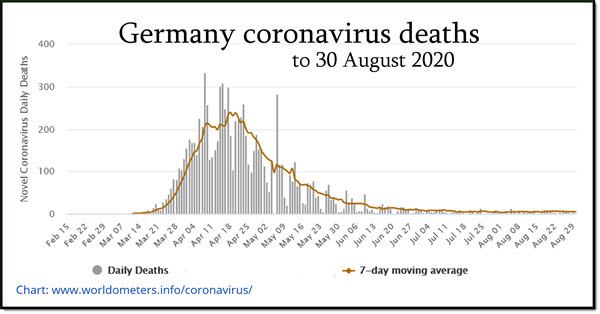
More than seventy countries worldwide now have the COVID-19 pandemic well-controlled, with many recording no deaths at all for the month of August 2020.
Worldwide, August was worse than July, as a second wave hit several countries including Australia. Deaths in all countries are currently recorded as 171,616 for August, compared with 162,780 in July. This confirms that countries which have put in place strict control regimes are reaping the benefits in reduced mortality. But many countries haven’t. Hence the global picture remains grim.
New Zealand, Iceland, Singapore, Thailand, China, Taiwan and Brunei are among 21 nations which recorded zero August deaths.
Altogether, 74 countries now have the virus suppressed or controlled, if we take as our measure of “success” a death rate below three per million citizens per month. (Data is from Worldometers.)
At the other end of the spectrum, several countries are failing spectacularly, with the United States recording 93.2 deaths per million in August — a total of more than 30,400. In one month. Worse still are South Africa (103.4 deaths per million), Brazil (135.4), Mexico (140.6), Colombia (181.7) and Peru (295.6).
Disparity among developed nations
Several nations which recorded zero deaths in August may not be reporting the data accurately.
These include large African nations Burundi, Niger and Tanzania, where health services, including testing and reporting, remain basic, and China which with a population of 1.44 billion seems pretty unlikely to have had no coronavirus deaths anywhere in August.
Hence it is safest to compare outcomes between those 54 nations ranked by the UN Development Program as “very highly developed”. We know these have advanced health facilities and can assume they collect accurate data — although that is an assumption.
Four of these recorded no deaths in August: New Zealand, Iceland, Singapore and Thailand. Five others kept deaths below one per million inhabitants: Malaysia, South Korea, Slovakia, Estonia and Cyprus.
Another 12 kept deaths between one and three. Not bad. Ten of these were in Europe: Latvia, Finland, Denmark, Norway, Austria, Germany, Hungary, Lithuania, Ireland and Switzerland. The other two were Japan and Uruguay.
Of the ten advanced countries which have clearly failed most conspicuously to reduce the death rate, four are in the Middle East — Bahrain (25.1 deaths per million), Saudi Arabia (29.5), Israel (46.4) and Oman (51.5). Three are in the Americas — the United States (93.1), Chile (95.7) and Argentina (109.5). The other three are Bulgaria (33.1), Kazakhstan (38.8) and Romania (66.5).
Australia’s awful August
Having recorded just two deaths in June and 93 in July (3.6 per million), the August tally was a profoundly disappointing 455 (17.8 per million). Australia ranked a lowly 42nd out of the 54 highly developed countries on deaths per million in August.

Even more disappointing news is that the trend through August appears to be worsening rather than improving. Deaths in the first 16 days were 199. Deaths in the last 15 days were 256. The rolling seven-day average does appear, however, to have plateaued for the moment.
The Americas losing badly
Just three countries in the Americas accounted for more than half the world’s active cases at the end of August. These are the United States (2.5 million), Brazil (689,157) and Peru (162,921). This is despite having just 7.4% of the world’s population.
The 29 countries in North, Central and South America combined — with just 12.9% of the world’s population — accounted for 65.1% of all August deaths.

Europe gaining control
Europe has recovered remarkably well since the pandemic devastated Lombardy, Italy, in March and April and spread rapidly to surrounding countries.
Cyprus, Estonia, Iceland and Slovakia all recorded fewer than one death per million in August. Altogether, 14 European states recorded fewer than three deaths per million.
One extraordinary success is Germany whose fatality rate has plummeted in the last few months. From 5,848 in April, deaths fell to 1,982 in May, eased further to 447 in June, then to 172 in July and just 147 in August.

Government actions matter
It is now clear that administrative decisions do impact infection and fatality rates. Outcomes are not a matter of blind chance.
The challenge for the countries yet to get death rates below three per million inhabitants per month is to assess what they have not yet done which the successful countries have done.
It appears to be a matter of following the science and redoubling efforts when setbacks occur — which August has shown are highly likely.








Four countries not mentioned in this overview: Sweden, India, South Korea and UK. We assume this is because they are neither among the best-performing nor the worst. But the Swedish government took its own ‘let-nature-take-its-course’ approach, and so deserves special attention in statistical analysis.
Yes, your assumption is correct, Bluie, except for India which is not in the UNDP’s ‘very highly developed’ category. All four are certainly intriguing.
Sweden’s response was different from most other European countries. Its outcomes have been below average for Europe, but certainly not the worst. Sweden had 256 deaths in July and 54 in August, which is 5.3 per million.
South Korea (which was mentioned briefly) had 19 deaths in July and 23 in August, which is 0.45 per million. Pretty impressive.
The UK had 798 deaths in July and 312 in August, which is 4.6 per million.
India was one of the poor performers in August with 28,884 deaths, compared with 19,141 in July. The August rate was 20.9 per million.
Poor, but nowhere near as bad as the USA with 92.3 deaths per million.
No mention of Cuba? Their health system is very advanced, and they send medical teams to other countries. Just because the USA has sanctions or embargoes doesn’t mean they are invisible? I assume WHO operates there? However, rest of article most informative, thank you.
Thanks, Aged female.
Cuba is not in the very high development category – although there is an argument it should be.
Of all 29 countries in North, Central and South America, Cuba has by far the best outcomes. Cuba had one death in July and seven in August, which is 0.62 per million.
That is streets ahead of all the other American nations.
Nice article, thank you! 🙂
As is common in Australia, the author fails to mention neighbouring Pacific countries and territories that have no recorded cases of COVID-19: Vanuatu, Solomon Islands, Tuvalu, Cook Islands, Tonga, Nauru, Kiribati, Palau, FSM, Marshall Islands, Wallis and Futuna, American Samoa. Surely this counts as “doing well.”
This silence is a serious issue, because these COVID-free countries are looking for support to deal with the economic impacts of border closure: loss of remittances, massive hit to tourism, job loss from direct and indirect employment in the hotel and hospitality sector, loss of export markets etc. There’s great resilience in Island communities and people are adapting to current realities. But as developing nations, they look to neighbours like Australia for support, and if we don’t talk about their needs as part of our recovery plan, they’ll look to other partners for support.
Disappointed, I came here looking for Erasmus to spruke his bankrupt ideology. Good to se Cuba mentioned, a functioning and world class medical system in a, ahem, cough, third world country.